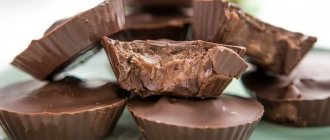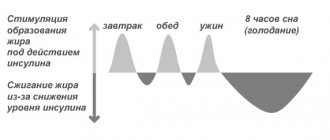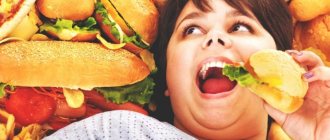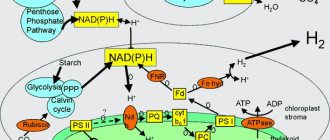September 26, 2020 Admin Home page » Tips and tricks
Find out how to reduce body fat the science behind it.
Types of fat. Rules for burning fat and advice from nutritionists. What is the danger of internal fat? Currently, fat deposits are attacking people more and more often; poor diet, stress, a busy work schedule lead to metabolic failure, which leads to excess weight gain.
Excess fat deposits in different areas makes people increasingly think about how to burn subcutaneous fat and prevent it from returning in the future. However, you need to know the strategy for combating excess weight, otherwise all efforts will be wasted and the desire to stick to diets and exercise will disappear for a long time.
Don't eat sugar and avoid sweetened drinks
Refined sugar is negative Fructose and sugar: A major mediator of non-alcoholic fatty liver disease. affects metabolism. Sucrose is broken down in the body into glucose and fructose. If you eat a lot of sugar, excess fructose enters the liver, which the organ processes Effect of Fructose Overfeeding and Fish Oil Administration on Hepatic De Novo Lipogenesis and Insulin Sensitivity in Healthy Men. it into fat. Moreover, it is delayed, according to studies Consuming fructose-sweetened, not glucose-sweetened, beverages increases visceral adiposity and lipids and decreases insulin sensitivity in overweight/obese people. , precisely in the waist area.
The only thing worse than sugar in this regard is liquid sugar. Sugary drinks are not registered by the brain in the same way as cake or candy, so a person can drink them in unlimited quantities. However, they significantly influence Effects of food form and timing of ingestion on appetite and energy intake in lean young adults and in young adults with obesity. on the total caloric intake of the diet. Sweetened drinks increase the risk of obesity in children by 60% Relation between consumption of sugar-sweetened drinks and childhood obesity: a prospective, observational analysis. .
Therefore, the first step to a flat stomach is changing your diet. Remove soda, packaged juices, and sugary sports drinks. But leave the fruits: the advantages of them outweigh the disadvantages of fructose. And, of course, read labels, as sugar may be in foods you wouldn’t expect.
Stress
Stress is a fairly common cause of weight gain. We often don't realize that the extra pounds we add are due to stress. It stimulates the body to release cortisol, which causes the liver to release excess sugar. But the body does not need such an amount, because it is not able to metabolize it all.
Because of this excess sugar, the body feels constantly hungry and we are forced to consume more food, especially foods high in sodium. This promotes the formation of fat folds in the described part of the body.
Eat more protein
Protein is an essential macronutrient for weight loss. It reduces The effects of consuming frequent, higher protein meals on appetite and satiety during weight loss in overweight/obese men. cravings for food, accelerates metabolism by 80–100 Gluconeogenesis and energy expenditure after a high-protein, carbohydrate-free diet. kilocalories per day and helps to eat 441 A high-protein diet induces sustained reductions in appetite, ad libitum caloric intake, and body weight despite compensatory changes in diurnal plasma leptin and ghrelin concentrations. kilocalorie less. Protein will not only help you lose weight, but also help you keep it off. The role of protein in weight loss and maintenance. it back after returning to the usual diet.
Research shows Quality protein intake is inversely related to abdominal fat. that people who eat more protein have much less belly fat. Experiments also confirm Intake of macronutrients as predictors of 5-y changes in waist circumference. reducing the risk of abdominal enlargement over the next five years.
To get the desired effect, increase the amount of protein in your diet to 25–30%. This can be done with eggs, fish, seafood, beans, nuts, meat, and dairy products. As an added bonus, cook with coconut oil, it also helps Effects of Dietary Coconut Oil on the Biochemical and Anthropometric Profiles of Women Presenting Abdominal Obesity. in the fight against belly fat. The recommended dose is 2 tablespoons per day.
Reduce carbohydrates in your diet
Low-carbohydrate diets have proven to be more effective A Randomized Trial Comparing a Very Low Carbohydrate Diet and a Calorie-Restricted Low Fat Diet on Body Weight and Cardiovascular Risk Factors in Healthy Women. compared to a low-fat diet. Moreover, this was true even when participants in experiments with a low-carb diet were allowed to eat as much as they wanted, and the group on a low-fat diet was limited in calories.
An additional effect of a low-carb diet is the rapid removal of water from the body. Therefore, the result on the scales will be visible in just two days. Research also proves the effectiveness of cutting carbohydrates in the diet specifically for short-term weight loss and hepatic triglyceride reduction: evidence of a metabolic advantage with dietary carbohydrate restriction. from visceral fat.
To lose weight, just give up refined carbohydrates. If you want to lose weight quickly, reduce your daily carbohydrate intake to 50 grams per day. This will lead to a state of ketosis, where the body uses fats as energy.
Eat foods rich in fiber
Fiber helps in the difficult task of losing weight, especially for soluble fiber Viscous versus nonviscous soluble fiber supplements: mechanisms and evidence for fiber-specific health benefits. . They absorb water and form a dense gel that lingers in the intestines. As a result, the movement of food through the digestive tract slows down, which gives a longer feeling of fullness and reduces appetite Effects of isolated soluble fiber supplementation on body weight, glycemia, and insulinemia in adults with overweight and obesity: a systematic review and meta-analysis of randomized controlled trials . .
One study found that 14 grams of fiber daily reduced calorie intake by 10% and resulted in Dietary fiber and weight regulation. 2 kg for four months. In another experiment, consuming 10 grams of soluble fiber per day resulted in a 3.7% reduction in abdominal fat Lifestyle Factors and 5-Year Abdominal Fat Accumulation in a Minority Cohort: The IRAS Family Study. .
Therefore, eat more vegetables, fruits, legumes, and some grains, such as oats. As a supplement, you can use glucomannan, a substance from the roots of the konjac plant. This is one of the most viscous dietary fibers, the effectiveness of which for weight loss is scientifically Beam-shaping device for long-film angiography. proven.
Strict diet
Diet is also a major factor that can help you get back into shape. You need to adhere to proper nutrition for a long time so that you become slim and healthy again. Eat often, but eat less food, don't eat too much food in one sitting, and don't overload your digestive system.
Replace high-calorie foods with lighter, healthier, nutrient-dense foods that won't harm your waistline. Avoid fatty and unhealthy foods such as chips, baked goods, cookies and sweets, and replace them with salads made with fresh fruits and vegetables.
Exercise
Exercise is important not only for weight control, but also for overall health. If you want to get rid of belly fat, you shouldn't focus on ab workouts. Studies confirm Extraction and localization by electron microscopy of an immunosuppressor fraction from Mycobacterium bovis Bacillus Calmette-Guérin (BCG). that local fat burning does not exist, crunches do not affect the volume of the abdomen in any way.
But walking, running, swimming and other aerobic exercises are effective. The Effect of Exercise on Visceral Adipose Tissue in Overweight Adults: A Systematic Review and Meta-Analysis. fight fat in the waist area. They also help prevent Exercise training prevents regain of visceral fat for 1-year following weight loss. weight gain in the future. At the same time, training reduces inflammation, lowers blood sugar and minimizes The effect of exercise training on clinical outcomes in patients with the metabolic syndrome: a systematic review and meta-analysis. metabolic disorders.
Features of subcutaneous fat
Subcutaneous accumulations in the abdominal area are deposits that nourish the body during hunger strikes and warm the human body in cold weather. The modern pace of life does not allow for proper nutrition. The formation of subcutaneous fat, which is a factor that provokes cardiovascular diseases and dysfunction of internal organs, is caused by improper diet and regimen.
The percentage of fat accumulation in the abdomen is determined by a special device. If the number exceeds 20, the person has more than 15 kg of excess weight.
The norm of the subcutaneous fat layer for women is up to 20%, for men – 10%. For normal functioning of the body, the figure should be 5-7%. With a deficiency, girls develop infertility and menstrual irregularities are observed.
Subcutaneous fat collects under the skin and spreads to internal organs. To avoid complications, you need to monitor your diet. Physical activity prevents excess weight.
Excess weight is formed due to dysfunction of the process of lipogenesis and lipolysis, which are responsible for the formation of tissue and the breakdown of deposits. Excess carbohydrates, fats in the body, and lack of protein are caused by an imbalance. The normal functioning of the body is affected by overeating and an inactive lifestyle. Deposits appear in the abdomen, sides, arms, orange peel appears on the thighs - cellulite.
The appearance of subcutaneous fat deposits, localized in several places at the same time, may be provoked by hormonal changes, restructuring in the woman’s body:
- pregnancy;
- lactation;
- menopause;
- period of puberty.
Watch what you eat
kakprosto.ru
Many people have no idea what and how much they eat, and tend to underestimate or overestimate the total calorie content of the diet and the content of macroelements in it. To change this situation, you will have to weigh all products. Maybe not for the rest of your life, but at least from time to time.
If you don't measure your portions and record the amount of calories, proteins, fats, and carbohydrates, then you simply won't be able to increase your protein intake to 25-30% of your total calories. All you need to control your diet is a kitchen scale, an app to record your results, and a simple formula for calculating calories in complex dishes.











